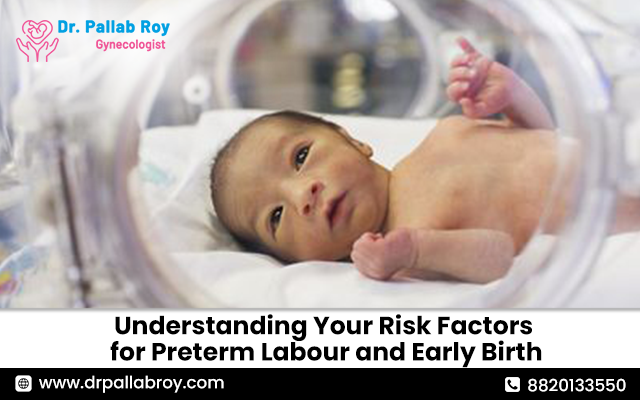For some mothers-to-be, the path to childbirth can be fraught with unexpected challenges, such as preterm labour and early birth. Preterm birth, defined as giving birth before 37 weeks of pregnancy, can pose significant health risks for both the baby and the mother. Understanding the risk factors associated with preterm labour is crucial for expecting parents to take proactive steps towards a healthy pregnancy. Below, the best gynaecologist doctor in Behala has explained them.
What is Preterm Labour?
Preterm labour occurs when the body starts preparing for birth earlier than expected, potentially leading to premature delivery. This condition affects approximately 1 in 10 pregnancies worlwide, making it a significant concern in maternal and child health. Babies born prematurely may face complications such as respiratory distress, developmental delays and even long-term disabilities. Identifying and managing risk factors can help mitigate these risks and improve outcomes.
Common Risk Factors
Several factors could increase the likelihood of preterm labour and early birth:
- Previous Preterm Birth: Women who have previously delivered prematurely are at a high risk of experiencing it again in subsequent pregnancies.
- Multiple Pregnancies: Carrying twins, triplets or higher-order multiples increases the strain on the uterus, potentially triggering early labour.
- Infections: Certain infections, like urinary tract infections or infections of the reproductive organs, can lead to inflammation and premature contractions.
- Chronic Conditions: Maternal health conditions such as high blood pressure, diabetes and clotting disorders can complicate pregnancy and increase the risk of preterm birth.
- Lifestyle Factors: Smoking, drug use along with excessive alcohol consumption during pregnancy are known to elevate the risk of premature delivery.
- Short Interpregnancy Interval: Getting pregnant again too soon after giving birth may not allow the body enough time to recover fully, increasing the chances of preterm labour.
Recognizing Signs and Symptoms
As per the best gynaecologist doctor in South Kolkata, early detection of preterm labour symptoms is crucial for prompt medical intervention. Symptoms may include:
- Regular contractions (every 10 minutes or more frequently)
- Abdominal cramps similar to menstrual cramps
- Pelvic pressure
- Change in vaginal discharge
- Lower backache
- Fluid leaking from the vagina
Experiencing any of these symptoms prior to 37 weeks gestation warrants immediate medical attention to assess the situation and, if necessary, take steps to delay premature birth.
Managing Risk
While some risk factors, such as a history of preterm birth or certain medical conditions, cannot be changed, there are certain measures expectant mothers can take to reduce the likelihood of preterm labour:
- Regular Prenatal Care: Attending prenatal appointments allows doctors to monitor the pregnancy closely and intervene early if complications arise.
- Healthy Lifestyle Choices: Maintaining a balanced diet, staying physically active and avoiding harmful substances like tobacco and alcohol can promote a healthy pregnancy.
- Managing Chronic Conditions: Controlling conditions such as diabetes and hypertension through medication and lifestyle adjustments can minimize their impact on pregnancy.
- Seeking Treatment for Infections: Prompt treatment of infections can help prevent them from triggering premature labour.
Conclusion
By working closely with the best gynaecologist doctor in Behala and staying vigilant for any warning signs, mothers-to-be can optimize their chances of welcoming their baby into the world at the right time.

